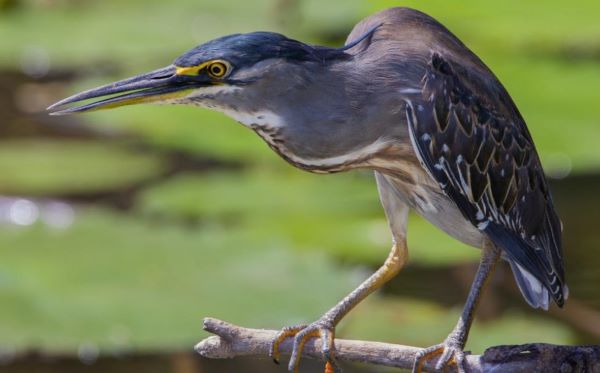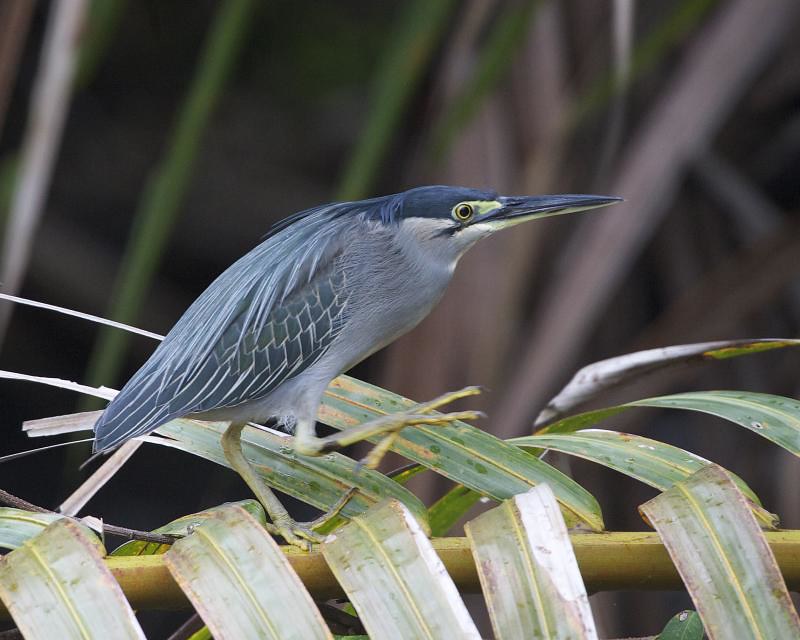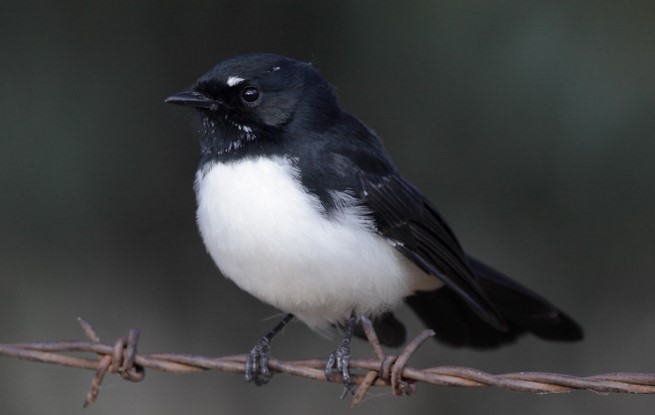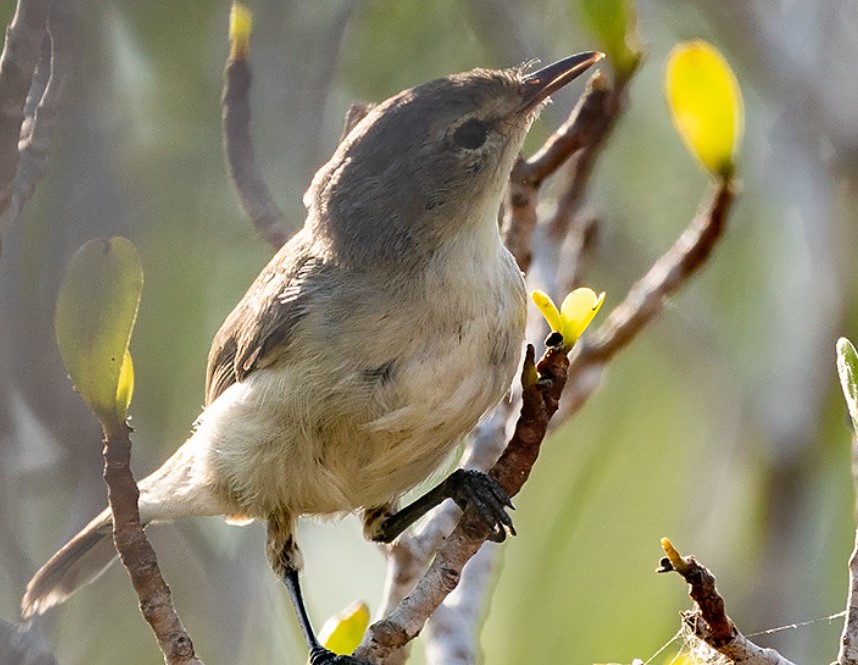Family: The striated heron (Butorides striata) is a member of the heron family Ardeidae in the genus Butorides.
Habitat: The striated heron lives in mangrove mudflats and oyster beds of eastern, northern, and north-western Australia. The striated herons roost within the shelter of low branches at high tide. From there, they sometimes dive into the water after prey, then swim back and climb onto branches to eat. When the tide retreats, the birds fly over the exposed tidal flats to forage, stalking stealthily along, body hunched. Crustaceans, fish, mollusks, insects, and particularly mudskippers are taken. Striated herons are solitary birds, roosting alone. Their territorial and courtship displays include bowing duets, flap-flight displays, crest-raising, and tail-flicking. Young, brooded, and fed by both parents. If the female nests again, the male tends to them after they have flown. There are two color phases in Australia: one, greenish grey, everywhere; the other, rufous-toned only on the Pilhara coast.
Vocalizations: striated heron squeaking at the nest, harsh tch-aah, and explosive hoo. Nestlings croak.

Distribution: Striated heron is usually found in coastal and estuarine waters south of Shark Bay in the west and Mallacoota in the east, and in Western Australia, across northern Australia, to Cape York, Queensland, and Victoria. It is a sedentary and interesting behavioral trait bird. Also widespread throughout the tropics and subtropics.
Identifications: Both adult sexes are identical. Even within the same race, plumage variation can occur. There is a slender back plume in the male. Mid-grey to dark grey-green above and light to dark cinnamon-grey below (grey form), or rufous above and brown-grey below (rufous form). The crown is a black and white line with dusky spots down the throat. Bare face lemon. The eyes are yellow. The bill is green-yellow with a black ridge. The legs and feet are brown or olive-grey, lined yellow to orange on the back. Moreover, during courtship display, the face and legs become red. The immature bird has grey and white stripes on the underparts and white spots on the wings. The downy young is grey-downed on jade green skin. The eyes and feet are the same as adults. When threatened, young birds will demonstrate by extending their necks and pointing their bills aloft.
Diet: Unlike many small heron species, striated herons are easier to spot as they stand motionless at the water’s edge, waiting to ambush prey. Their primary diet consists of small fish, frogs, and aquatic insects; they also occasionally use bait, carefully placing a feather or leaf on the water’s surface and selecting fish that come to investigate.
Nesting and Breeding: The striated heron’s nesting and breeding occur in September, February, and March. The nest made a platform of sticks in the fork of the mangrove. Habitually, this heron is typically constructed to nest among trees or shrubs, but it can also be seen occasionally in in-ground shelters and frequently next to water. The nest has external measurements of 40–50 cm in width, 8–10 cm in height, and an interior depression that is 20 cm in width and 4-5 cm deep. Small wetlands in the old-world tropical regions of South America, the Caribbean, Japan, and Australia serve as their breeding grounds.
Eggs and Incubations: The bird lays 3 to 4 eggs in a chalky green-blue oval shape, about 42 x 31 mm. The incubation period is about 22–25 days for both sexes. Young fledge in 26–28 days.
Size: The striated heron measures about 425–460 mm long, weighs 130–250 grams, and has a wingspan of 20–24 inches.
Other Names: This bird is also known as the Green-backed Heron, Little Green Heron, and Mangrove Heron.
Similar Species: Well, it was once believed that this bird was conspecific with the closely related green heron (Butorides virescens) species found in North America and the lava heron (Butorides sundevalli) found in the Galápagos Islands. These birds were referred to as “green-backed herons” together.
Races: There are approximately twenty-one races; only two are found in Australia: one on the east coast to Cape York and the other on the north and west coast.
Status: The IUCN lists the striated heron as a species of least concern because it is widely distributed and usually common.
Related Reading: Rufous Night Heron (Nycticorax caledonicus)







